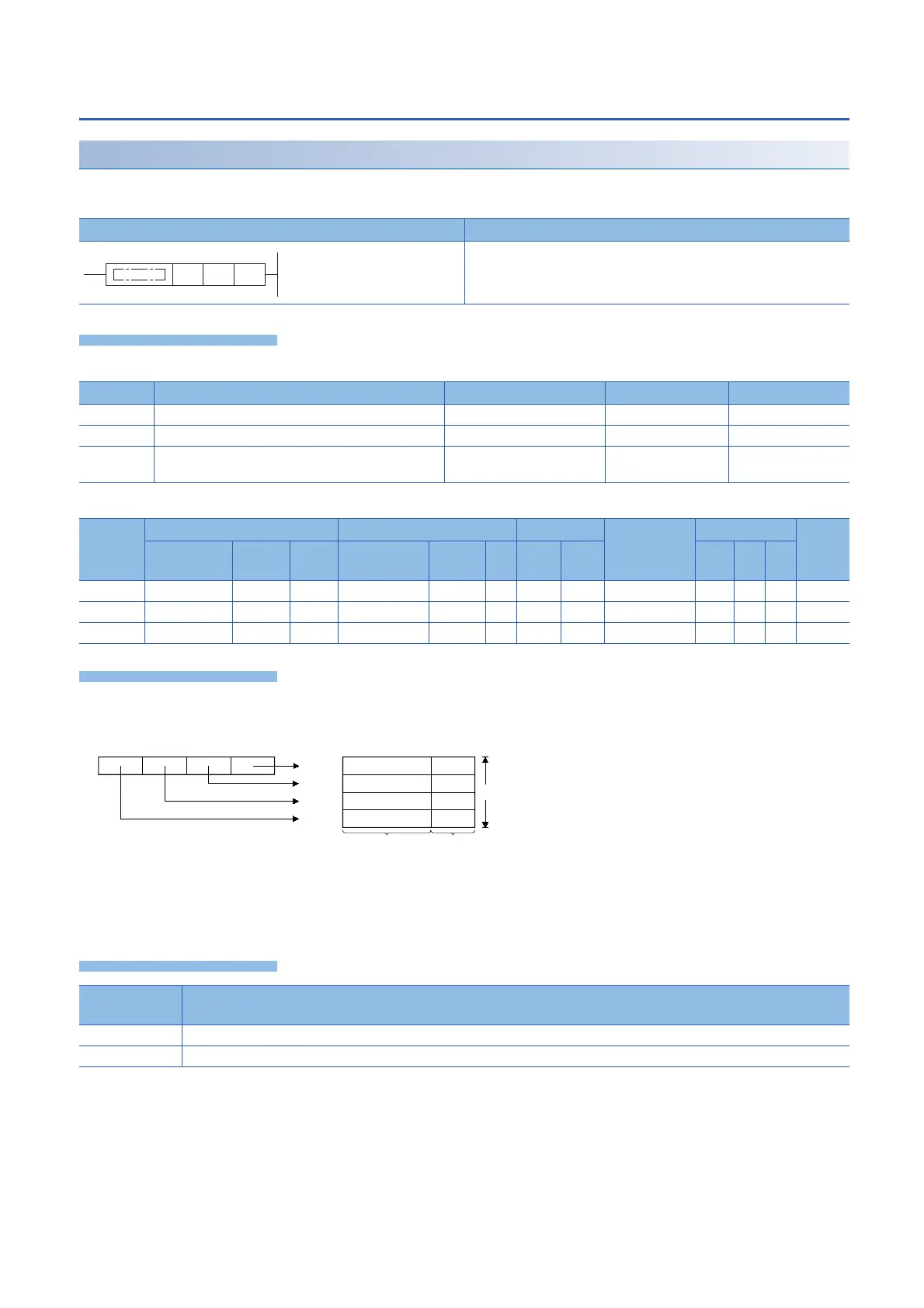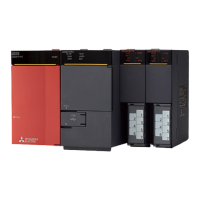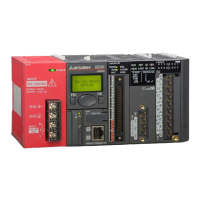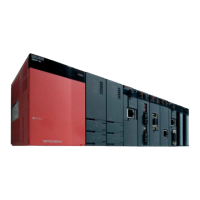286
6 BASIC INSTRUCTIONS
6.5 Data Conversion Instructions
Separating 4 bits from 16-bit data
DIS(P)
These instructions store the data equivalent of the (n) nibbles (1-nibble/ 4-bits) of the 16-bit binary data specified by (s) in to
the lower-order 4 bits of (n) number of devices starting from the one specified by (d).
■Descriptions, ranges, and data types
■Applicable devices
• These instructions store the data equivalent of the (n) nibbles (1-nibble/ 4-bits) of the 16-bit binary data specified by (s) in to
the lower-order 4 bits of (n) number of devices starting from the one specified by (d).
• The higher-order 12 bits of (n) number of devices starting from the one specified by (s) becomes 0.
• When (n) is 0, no processing is performed, and the contents of the (n) number of devices starting from the one specified by
(d) do not change.
Ladder diagram Structured text
ENO:=DIS(EN,s,n,d);
ENO:=DISP(EN,s,n,d);
Operand Description Range Data type Data type (label)
(s) Head device for storing the data to be separated 16-bit signed binary ANY16
(d) Head device storing separated data 16-bit signed binary ANY16
(n) Number of separations (0 indicates no processing is
performed)
1 to 4 16-bit unsigned binary ANY16
Operand Bit Word Double word Indirect
specification
Constant Others
X, Y, M, L,
SM, F, B, SB
U\G T, ST,
C, LC
T, ST, C, D,
W, SD, SW, R
U\G Z LC LZ K, H E $
(s)
(d)
(n)
Error code
(SD0/SD8067)
Description
2820 The range of (n) number of points from (d) exceed the corresponding device range.
3401 (n) is other than 0 to 4.
······
b3 b0
···
b7 b4
···
b11 b8
···
b15 b12 b0b3
···
b4b15
(s)
(d)
(d)+1
(d)+2
(d)+3
(n)
Storage areaThese bits
become "0".

